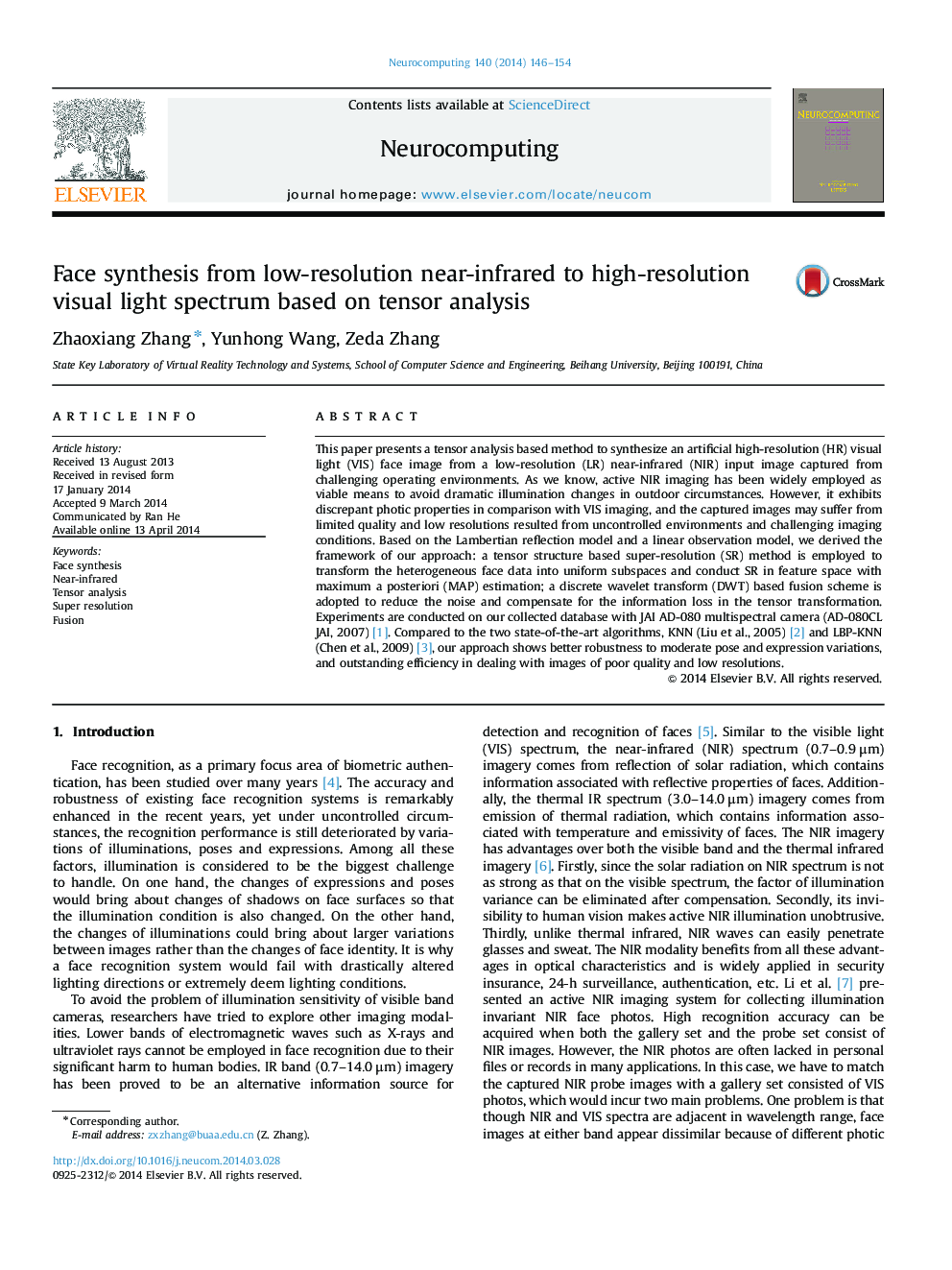| Article ID | Journal | Published Year | Pages | File Type |
|---|---|---|---|---|
| 406676 | Neurocomputing | 2014 | 9 Pages |
This paper presents a tensor analysis based method to synthesize an artificial high-resolution (HR) visual light (VIS) face image from a low-resolution (LR) near-infrared (NIR) input image captured from challenging operating environments. As we know, active NIR imaging has been widely employed as viable means to avoid dramatic illumination changes in outdoor circumstances. However, it exhibits discrepant photic properties in comparison with VIS imaging, and the captured images may suffer from limited quality and low resolutions resulted from uncontrolled environments and challenging imaging conditions. Based on the Lambertian reflection model and a linear observation model, we derived the framework of our approach: a tensor structure based super-resolution (SR) method is employed to transform the heterogeneous face data into uniform subspaces and conduct SR in feature space with maximum a posteriori (MAP) estimation; a discrete wavelet transform (DWT) based fusion scheme is adopted to reduce the noise and compensate for the information loss in the tensor transformation. Experiments are conducted on our collected database with JAI AD-080 multispectral camera (AD-080CL JAI, 2007) [1]. Compared to the two state-of-the-art algorithms, KNN (Liu et al., 2005) [2] and LBP-KNN (Chen et al., 2009) [3], our approach shows better robustness to moderate pose and expression variations, and outstanding efficiency in dealing with images of poor quality and low resolutions.
